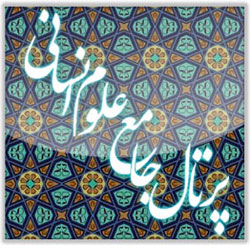Interaction of Climate and Meaning in the Vernacular Architecture of Laft Port: A Strategy for Sustainable Design
Keywords:
Indigenous architecture, climate, meaning, sustainable housing, Bandar Laft, climate-oriented designAbstract
This study investigates the mutual influence of climatic factors and semantic concepts in the formation of residential architecture in Laft Port and proposes a framework for sustainable architectural design. The primary objective is to analyze the role of these factors in the form, function, and identity of the region’s architecture. A mixed-methods research design was employed, utilizing structured questionnaires to collect both qualitative and quantitative data from residents and experts. Five principal indicators—physical, functional, cultural, perceptual, and symbolic—were selected to evaluate the vernacular architecture of Laft. Data were analyzed using the SWOT technique. The SWOT analysis revealed that the physical and perceptual indicators received the highest scores, emphasizing the harmony between the natural and built environments, while the symbolic and cultural indicators played a key role in preserving historical identity. The findings of this study indicate that sustainable design in Laft’s residential architecture must preserve the interaction between climate and meaning. The SWOT analysis provides strategies for enhancing the alignment of these two elements and can contribute to the advancement of vernacular architectural knowledge and its adaptation to contemporary needs.
Downloads
References
1. Hosseini Nasab SH. A comparative study of transformations in public space within the spatial organization of Hormozgan ports influenced by economic and cultural paradigm shifts (Case studies: Lāft, Kong, Hormoz). Landscape. 2024;16(68):26-37.
2. Dabiri Nejad N. Investigating sustainability dimensions in the indigenous architecture of Hormozgan Province. Construction Engineering and Management. 2022;5(4):9-15.
3. Barghi Dehghan H, Toosi R, Jamini D. Sustainable tourism development planning in the Persian Gulf region (Case study: Qeshm Island). Spatial Planning. 2016;2(3):75-94.
4. Liu J, Yi Y, Wang X. Exploring factors influencing construction waste reduction: A structural equation modeling approach. Journal of Cleaner Production. 2020;276:123185.
5. Marcińczak S, Mooses V, Strömgren M, Tammaru T. A comparative study of immigrant-native segregation at multiple spatial scales in urban Europe. Journal of Ethnic and Migration Studies. 2023;49(1):43-65.
6. Martinovic S, Zecevic N, Salihbegović A. Vernacular Residential Architecture in the Context of Sustainability-Case Study of Svrzo's House Complex. Journal of Sustainable Architecture and Civil Engineering. 2023;32(1):19-40.
7. Pahlavan B, Aminpoor A, Memarian G. A typological approach to the spatial and physical analysis of Ardabil native houses. Islamic Art Studies. 2021;18(43):60-73.
8. Abed A, Obeidat B, Gharaibeh I. The impact of socio-cultural factors on the transformation of house layout: a case of public housing-Zebdeh-Farkouh, in Jordan. Journal of Asian Architecture and Building Engineering. 2023;22(3):1195-208.
9. Afshar A, Alaghbari WE, Salleh E, Salim A. Affordable housing design with application of vernacular architecture in Kish Island, Iran. International Journal of Housing Markets and Analysis. 2012;5(1):89-107.
10. Najarnajad Mashhadi M, Afzalian K, Sheibani Seyed Alhosseini SM. Explaining the enduring indicators of indigenous housing in Iran using grounded theory. Studies in Iranian Islamic Cities. 2021;42(11):1-14.
11. Kheirabadi F, Nour Mohammadzadeh H, Alizadeh H. The role of the orientation of urban spatial structures in the climatic comfort of citizens (Case study: Bandar Abbas). Geography and Environmental Sustainability. 2017;24:15-32.
12. Soroush-Nia Mofidi SM, Shamirani A. Investigating the design characteristics of contemporary multi-unit housing (plexes) in relation to indigenous architectural patterns of hot and dry climates: A case study of indigenous housing in Kerman. Scientific and Research Quarterly of Urban Research and Planning. 2024;12(47):319-38.
13. Ruonavaara H. Theory of housing, from housing, about housing. Housing, Theory and Society. 2018;35(2):178-92.
14. An Y, Liu L, Guo Y, Wu X, Liu P. An Analysis of the Isomerism of Tibetan Vernacular Dwellings Based on Space Syntax: A Case Study of the Semi-Agricultural and Semi-Pastoral District in Gannan Prefecture, China. Buildings. 2023;13(10):2501.
15. Posht AMKR, Daneshjoo K, Shemirani SMM. Native house designing pattern recognition in Mazandaran province with climatic approach. Nexo Scientific Journal. 2020;33(2):378-91.
16. Hartig T. Restoration in nature: Beyond the conventional narrative Nature and psychology: Biological, cognitive, developmental, and social pathways to well-being2021. 89-151 p.
17. Etemadi S, Nasouhi F, Armanfar M. Examining sustainability principles in traditional buildings of Iran's hot and humid climate with a focus on traditional markets. 2019.
18. Soleymanpour R, Parsaee N, Banaei M. Climate comfort comparison of vernacular and contemporary houses of Iran. Procedia-Social and Behavioral Sciences. 2015;201:49-61.
19. Philokyprou M. Environmental Features of Vernacular Architecture: The Case of Cyprus. Journal of Architecture. 2023;9(2):201206.
20. Rahebi G. Exploring the concept of "type" in indigenous housing and proposing an approach for categorizing rural housing types in Iran. Quarterly Journal of Housing and Rural Environment. 2016;34(150):3-18.
21. Mohammadpour MH, Rouhani Pashaki SA, Zarei S, editors. Investigating the characteristics of indigenous housing in Iran's hot and humid climate (Case study: Bandar Lengeh)2017: National Conference on Architecture, Urban Planning, and Sustainable Development.
22. Mofidi Shamirani SM, Nik Kadam N. Extracting climatic patterns of living spaces in the indigenous houses of Bandar Lāft using grounded theory. 2016.
23. Tabatabai Malazi F, Sabernejad J. Evaluating the climatic adaptability of the form characteristics of indigenous housing in Lāft based on the Mahani model. Seven Hasar Environmental Studies. 2016;18:69-84.
24. Torshabi KB. The Cultural Capacities of Indigenous Housing A Case Study of Native Housing in Central Baluchestan, Iran. Iranian Journal of Archaeological Studies. 2023;13(2):117-32.
25. Torshabi KB, Akrami A. Flexibility in rural indigenous housing in Iran's Sistan and Baluchestan Province. Architecture in Hot and Dry Climates. 2022;9(13):103-18.
26. Small ML, Adler L. The role of space in the formation of social ties. Annual Review of Sociology. 2019;45(1):111-32.
27. Zeynali Kharrazi A, Nik Kadam A, Mofidi Shamirani SM. Explaining the impact of building design on reducing latent energy in the geographical and climatic context of Bandar Abbas. Scientific and Research Quarterly of New Perspectives in Human Geography. 2023;13(3):570-90.
28. Zeynali Kharrazi A, Nik Kadam A, Mofidi Shamirani SM. Architectural solutions for reducing latent energy in residential buildings in Bandar Abbas. Housing and Rural Environment. 2022;40(176):103-14.
Downloads
Published
Submitted
Revised
Accepted
Issue
Section
License
Copyright (c) 2025 کامران واحدی, سعید صالحی (نویسنده)

This work is licensed under a Creative Commons Attribution-NonCommercial 4.0 International License.









